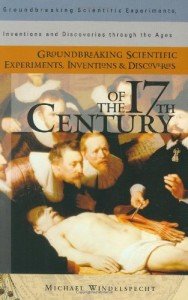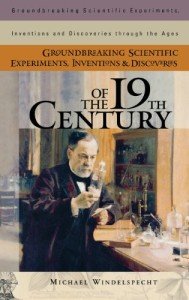The Groundbreaking Scientific Experiments, Inventions & Discoveries Series: My Gateway Into Publishing
Every writer in the world would love to say their first book was a bestseller, or made enough at least to buy a new car, or maybe a great vacation. Unfortunately, this is not that type of story, but as you’ll see, it’s a great start to a life-changing journey.
I had always wanted to be a writer, and even started a relatively small blog on environmental issues as an assistant professor at Floyd College in Rome, Georgia (lots more on that later!). Inspired by the writings of Carl Sagan and others, and armed with a belief I could write, I applied to an ad by Greenwood Publishers for authors. Surprise! … I was rejected.
I’m not a person who believes in luck; I believe we create the environment for opportunities to happen. So I sent an email to Dr. Robert Krebs, the science editor of the Groundbreaking Scientific Experiments, Inventions & Discoveries series from Greenwood Publishing (now ABC-CLIO). I informed him I’d be willing to help him out in his project in any way possible.
Three months later, out of nowhere, I received an email asking if I wanted to take over the book about the 17th Century. Seems their “preferred” author was, well, no longer preferred. So, of course I said yes. Then I realized something – despite almost a decade in science education, I knew relatively nothing about 17th century science.
One of the most important things that this book taught me (besides that 17th century science existed) was the discipline of writing under a deadline. Discipline is probably the hardest thing for an author, especially one who is working from home and already has a full-time (plus) job.
When I started this project, I was trying to juggle the world of being a new tenure-track professor, dad of two young children, and, most importantly, a writer with no credentials, no experience, and nothing more than a crazy vision.
So, I created a simple math problem:
“If Michael wants to author a book containing X words in Y days, how many words must he write each day?”
My answer was 1,500 — a seemingly doable amount. So I set up an office, sat down on Day 1 to get started.
I drew a blank. Same for Day 2. And Day 3. After the first 5 days, I was already down 7,500 words. Reality sucks. I needed to come up with a system forcing me to not only write, but also to allocate time for research, revisions and, most importantly, rest.
The solution? I decided to document my efforts.
For me, that, meant building a production spreadsheet. It was relatively simple — each day I had to record the number of words written and time spent researching topics.
Everything was color-coded. Green was on track; Yellow was for areas that were lagging. Red was for problem areas.
I also cut myself a little break. I upped the words to 2,000 per day, but only 4 days per week. The “down days” take a day of rest from the schedule.
However, that rarely ever happened. Instead those days became guilt-free catch-up days, or occasionally, get ahead days.
Color coding provided me with a visual performance check, and the incentive to reduce red and produce green.
I must have done something right, because shortly after I submitted the 17th Century book (which was on time!), I was awarded the 19th Century title (another preferred author had bailed on the project - there is a pattern here). The deadlines were accelerated, but this time I was ready. The end result was my first two published books; but more importantly, the skills of discipline and perseverance.
The skills honed in during this first project were about to prove to be invaluable in the very near future as I ventured into the world of book series editor for a massive set of texts on the human body.
More updates on that later….


